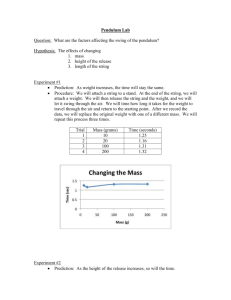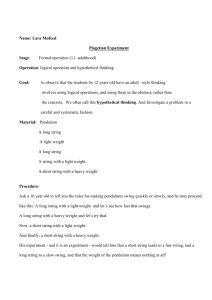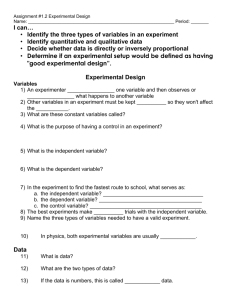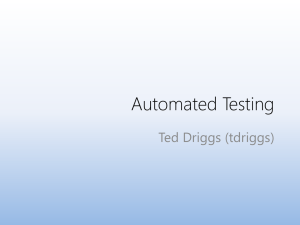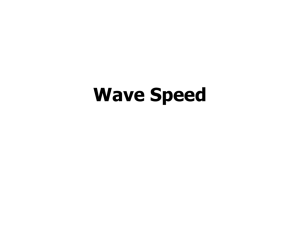Pendulum Lab
advertisement
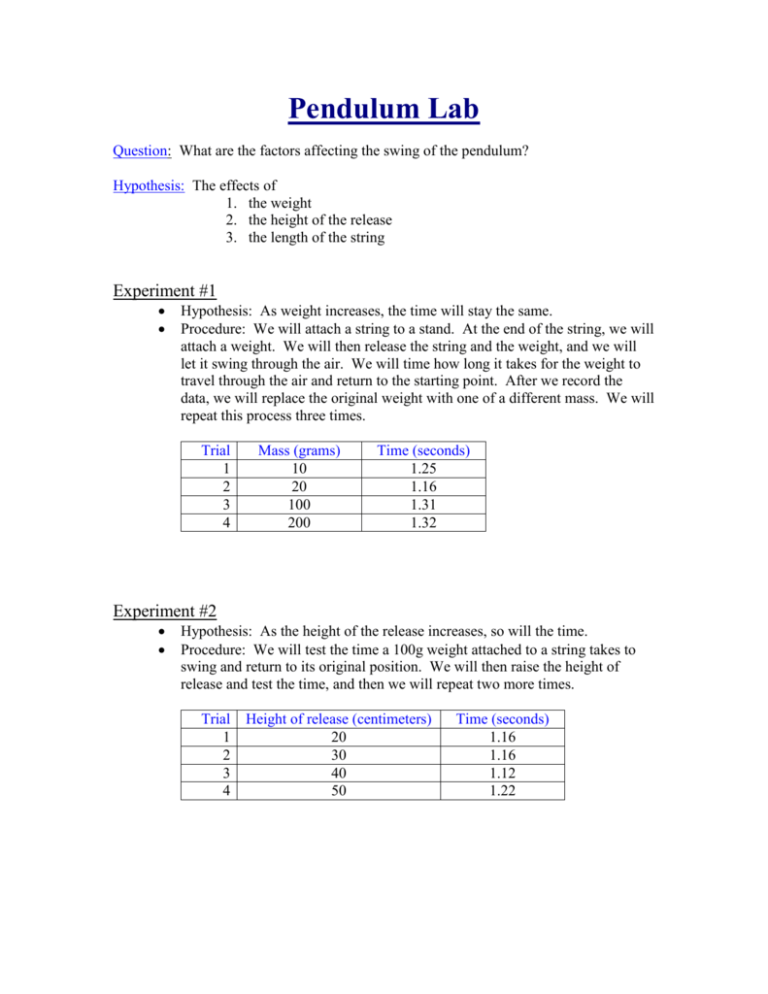
Pendulum Lab Question: What are the factors affecting the swing of the pendulum? Hypothesis: The effects of 1. the weight 2. the height of the release 3. the length of the string Experiment #1 Hypothesis: As weight increases, the time will stay the same. Procedure: We will attach a string to a stand. At the end of the string, we will attach a weight. We will then release the string and the weight, and we will let it swing through the air. We will time how long it takes for the weight to travel through the air and return to the starting point. After we record the data, we will replace the original weight with one of a different mass. We will repeat this process three times. Trial 1 2 3 4 Mass (grams) 10 20 100 200 Time (seconds) 1.25 1.16 1.31 1.32 Experiment #2 Hypothesis: As the height of the release increases, so will the time. Procedure: We will test the time a 100g weight attached to a string takes to swing and return to its original position. We will then raise the height of release and test the time, and then we will repeat two more times. Trial 1 2 3 4 Height of release (centimeters) 20 30 40 50 Time (seconds) 1.16 1.16 1.12 1.22 Experiment #3 Hypothesis: We don’t think that the length of the string will affect the time. Procedure: We will test how long it takes for a 100g weight attached to a string to swing from one point and back to the same point. We will use various lengths of string to test the times of the swing. Trial 1 2 3 4 Length of String (centimeters) 17 30 37 60 Time (seconds) .81 1.06 1.15 1.53 Conclusion After completing three experiments, we concluded that the only factor affecting the time of the swing of a pendulum was the length of the string (Experiment #3). The hypothesis for Experiment #3 was incorrect, as was the hypothesis for the weight on the string (Experiment #1). The time increased as the length of the string increased. The following graph shows how the length of the string (the independent variable) affects the time (the dependent variable). We choose a power model as the best fit to our data. Time vs. Length 1.8 1.6 1.4 Time (s) 1.2 1 Time Pow er (Time) 0.8 y = 0.1943x 0.4997 R2 = 0.9944 0.6 0.4 0.2 0 0 10 20 30 40 Length of String (cm ) 50 60 70 Equation: Time = 0.1943(Length)0.4997 Explanation of equation: Time is the dependent variable measured in seconds. The square root (approximately – 0.4997 0.5) of length, the independent variable, is measured in centimeters. To make the present units (seconds equals the square root of centimeters) work out and recognizing that gravity acts as part of the model, the equation must include gravity [meters/(seconds)2] in the radicand and should be divided into length for meters-centimeters to cancel and seconds squared to move to the numerator. The constant of proportion between length and time in the equation is 0.1943, which is similar to 2/980 (.2007), the value of a full cycle of the pendulum divided by gravity in centimeters per second squared. Therefore, the equation of the trend line is T = 2(L/g).5, the classic model. Factors affecting data: human error in measurement of the string and the time of the swing was measured by stopwatch.
